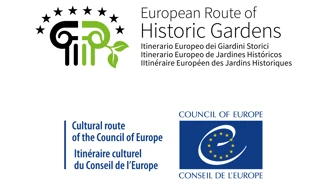The History of Monserrate Park Palace

The history of Monserrate starts out in 1540, the point in time when Friar Gaspar Preto ordered the construction of a hermitage here dedicated to Our Lady of Monserrate, following a journey across the Iberian Peninsula when he marvelled at the hermitage of Montserrat nearby Barcelona, in Catalonia. The property then belonged to the Todos os Santos Hospital of Lisbon, of which Friar Gaspar Preto was rector and he planned for the site to serve both as a place of workshop and for growing agricultural products for consumption in the Hospital.
In the 17th century, the Mello e Castro family held the charter for the Estate of Monserrate prior to its acquisition in 1718 by Caetano de Mello e Castro, Commander of Christ and Viceroy of India. However, in that same century, the 1755 earthquake of Lisbon devasted the site, leaving a major trail of destruction. Even in poor condition, the site was rented in 1789 by Gerard of Visme, a British trader who ordered the building of a Neogothic castle there but in which he was to reside for only a few years.
In 1794, the British writer William Beckford became the new tenant of Monserrate. Subsequently, he commissioned restoration and improvement works on the building and its immense surrounding gardens. The site was again doomed to abandonment in 1799 when the writer moved out of the property. His rental contract was only to terminate eight years later.
Even in a state of decline, the site still attracted many foreign visitors, especially among the British. One such example was Lord Byron, the renowned poet who holds such an indelible link with the Romantic movement, who expressed his love for Monserrate in the poem "Childe Harold's Pilgrimage".
It is thus that, in 1863, following such a succession of owners, histories, restorations and abandonments, Francis Cook, a British trader and art collector, became the owner of the Estate of Monserrate and the 1st Viscount of Monserrate. There, he commissioned the construction of the palace that combines Gothic and Indian influences with Moresque suggestions. The exotic and foliage motifs on the interior decoration extend harmoniously to the exterior that was also reformulated and transformed into one of the finest of all Portuguese botanical gardens.
Representing one of the most notable Romanticism inspired landscapes in Portugal, the Park of Monserrate has received species from all around the world, which were structured into geographic areas to reflect the diverse origins of the plants and establish differing scenarios along the pathways running between the ruins, lakes and waterfalls. This came about especially due to the participation of the landscape designer William Stockdale, the botanist William Neville and the master gardener James Burt but, above all, due to the romantic spirit of Francis Cook that we may today encounter in the Park of Monserrate such contrasting scenarios along the twisting paths and growing alongside the indigenous species of this region, such as the tree-sized arbutus, the already very rare species of holly and the imposing cork oaks, there appear ancestral aboral ferns and araucarias, agaves and palms that recreate a Mexican themed scenario while camelias, azaleas, rhododendrons and bamboo recalling the gardens of Japan.
In this paradisiacal scenario, the Cook family would spend their summer holidays and organise huge parties.
The Portuguese government acquired the property and the palace in 1949 before, a few years later, the Park and Palace of Monserrate were classified as a Property in the Public Interest. They form a key part of the Cultural Landscape of Sintra ranked by UNESCO as World Heritage in 1995.
In 2000, the management was handed over to Parques de Sintra, which embarked on a thorough intervention that included the rehabilitation of all the roofing and facades and the installation of new infrastructural networks that enabled the reopening of the palace in 2010. The restoration of the interiors took place on full display to the visitors in the period through to 2016. Currently, the palace has been totally restored and recovered the splendour of its former times. Within the scope of its global restoration, Parques de Sintra is now working on the museum collection and correspondingly acquiring pieces that evoke not only its important collections of art but also the daily environment of the Cook family in Monserrate. Highlights within this scope was the 2017 acquisition of a Renaissance relief in marble attributed to Gregorio di Lorenzo, featuring a sculptural depiction of the Virgin with Child. This Italian Renaissance work of art makes its return to the Palace of Monserrate, where it was once in the past a piece in the valuable collection of the major British art collector Sir Francis Cook (1817-1901).
The Park and Palace of Monserrate are integrated in the "European Route of Historic Gardens", within the “Cultural Routes of the Council of Europe” since 2020.
The Cultural Routes programme, launched by the Council of Europe in 1987, demonstrates in a visible way, by means of a journey through space and time, how the heritage of the different countries and cultures of Europe represent a share cultural heritage. The Cultural Routes put into practice the fundamental values of Council of Europe: human rights, cultural democracy, cultural diversity and identity, dialogue, mutual exchange and enrichments across boundaries and centuries. As of 2020, there are 40 certified Cultural Routes of the Council of Europe (www.coe.int/routes).

